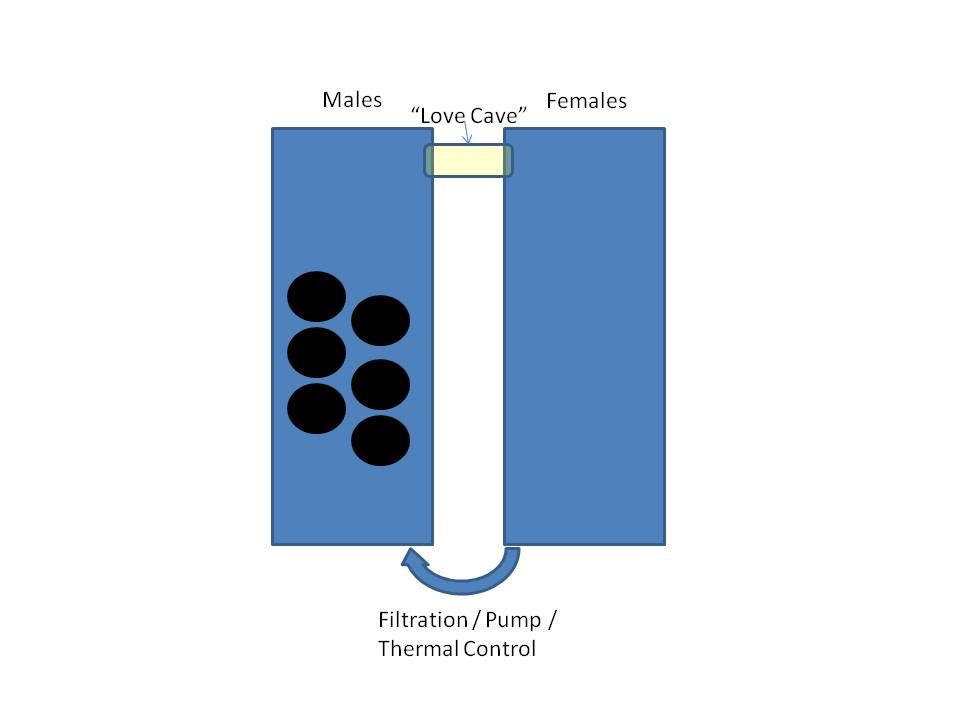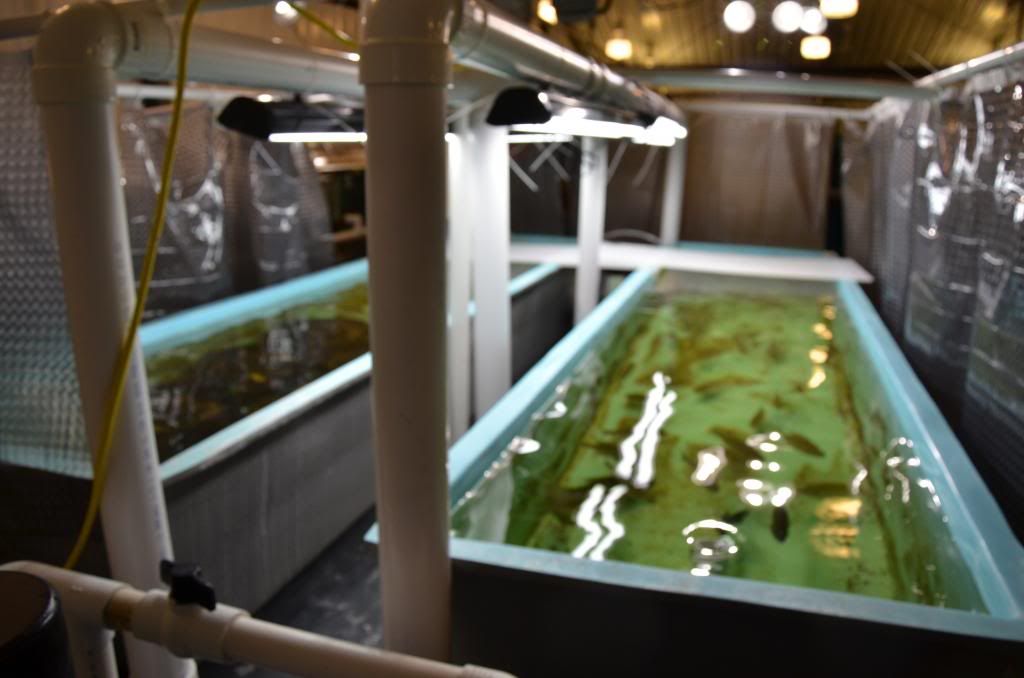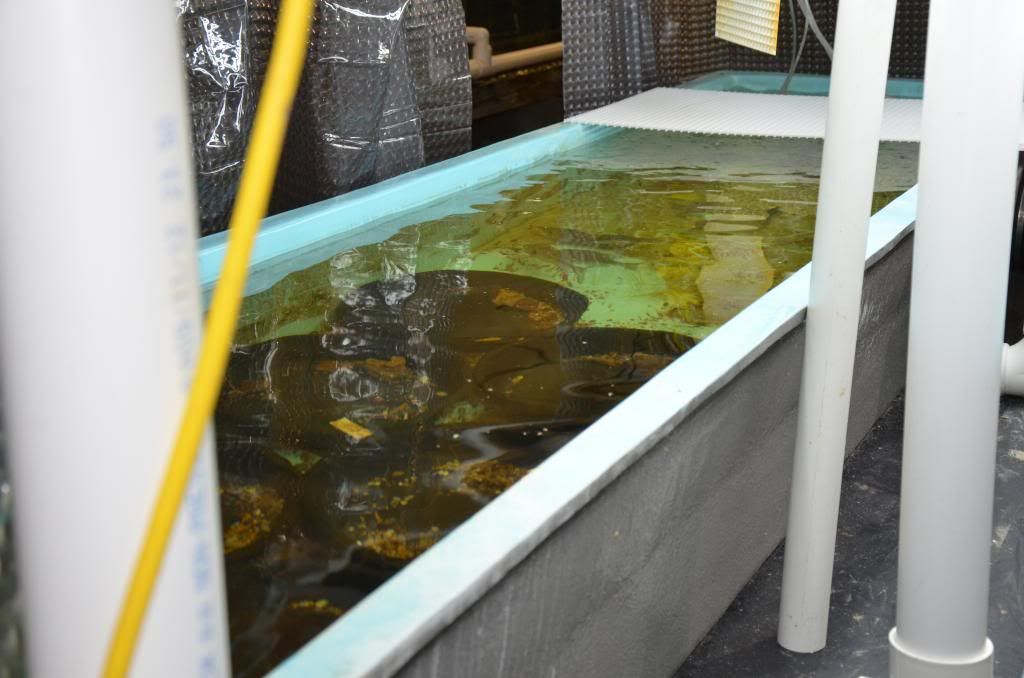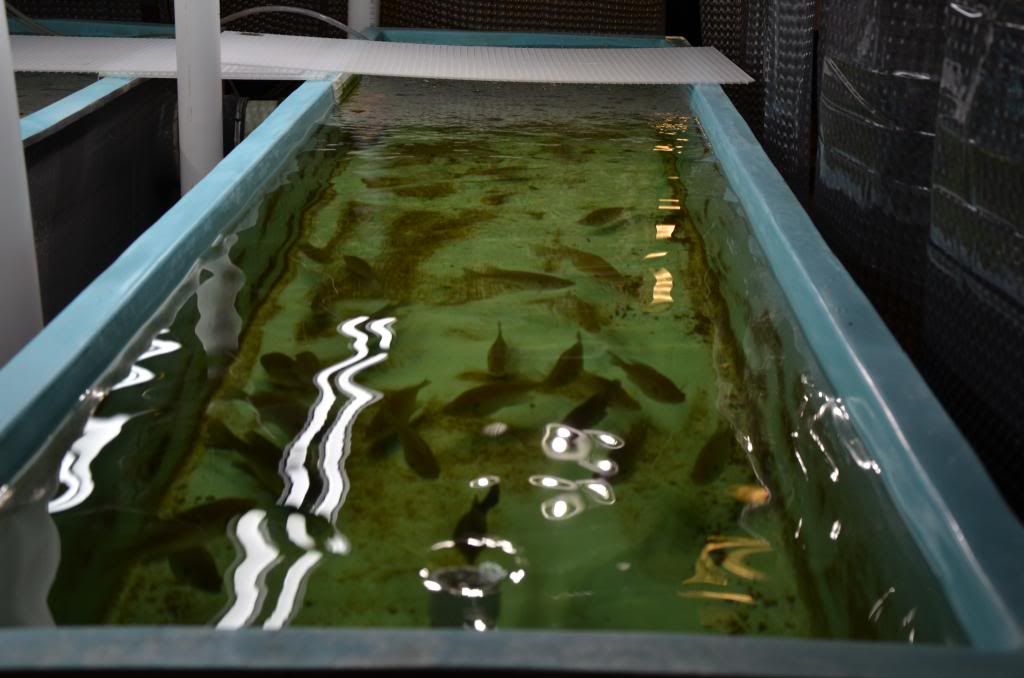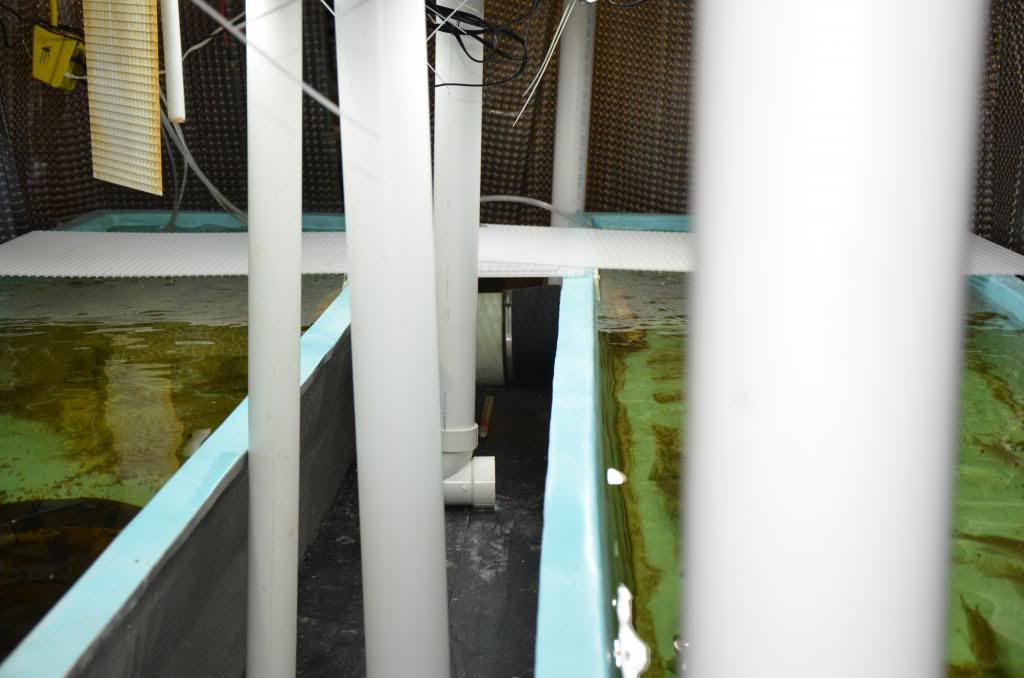Getting Bluegill to Breed
#81
 Guest_centrarchid_*
Guest_centrarchid_*
Posted 17 September 2012 - 12:10 PM
Relax. You are taking on something that requires experience best developed through a series of failures. You have already spent > 90% of what needs to be invested for materials and equipement. As for effort, consider what I suggested, make so daylight fish experience does not conflict with your work schedule. Then caring for fish with a little practice can be wittled down to minutes of the day.
#82
 Guest_sam585_*
Guest_sam585_*
Posted 18 September 2012 - 02:10 AM
Centrarchid how many larvae do you think it takes to fill a 1ftx1ftx1ft area in a 75gal tank? because i have no idea on how to figure out how many fish are presently in the tank. Im guessing that their are between 1000-2000 but still no idea really.
#83
 Guest_centrarchid_*
Guest_centrarchid_*
Posted 18 September 2012 - 09:49 AM
#84
 Guest_sam585_*
Guest_sam585_*
Posted 18 September 2012 - 12:15 PM
Additionally I discovered if I adjust the lighting to have only the center of the tank lit, with the other two sides dark, the fish will congregate there and swim in only the area which is lit, making it tremendously easier to get the brine shrimp to them, and hopefully cut down on their explorer tendencies.
#85
 Guest_sam585_*
Guest_sam585_*
Posted 22 September 2012 - 04:53 PM
Well I figured out what was killing the brood, it was the filteration. It was just too powerfull and was sucking them up over night.
We are down to about 100-200 fish now.
Good news is that since i turned off the filtration the population has been very stable, I even recognize what they look like now.
They have grown quite a bit too.
Question for anyone who knows, how long do you think a 10-12 day old fish (counting the time from egg->hatch->swim up) can go without eating? Additionally when feeding them do they need to consume food for 8hrs a day and can go the rest of the time without eating? Or do they need to be fed over a period of time spread out the day so they do not go to long without eating?
At any rate we are working on building a brine shrimp drip system so we can drip brine shrimp into the tank , hopefully enough to get them through the day.
#86
 Guest_centrarchid_*
Guest_centrarchid_*
Posted 22 September 2012 - 05:24 PM
Based on lots of experience feed them 3x daily. 0700, 1800, and 2300. Not perfect but much better than 1x daily.
Drip method will require some engineering to ensure quality stream of BS applied to tank. Timer connected to solonoid valve I would prefer.
#87
 Guest_gzeiger_*
Guest_gzeiger_*
Posted 22 September 2012 - 05:46 PM
What makes you think the filtration was killing fish, rather than dead or dying fish getting caught in the intake as you always see at pet shops? How are you keeping the water clean now?
#88
 Guest_sam585_*
Guest_sam585_*
Posted 22 September 2012 - 07:29 PM
You could be right that dead fish got put into the filtration, though i don't want to take the chance with this batch since i don't think I can do another spawning until spring (to much work). Additionally I found it odd that every day that i turned off the lights for bed and check about 1/3 of the brood would be missing it was very troubling. Without the filteration on I have not noticed any deaths though it could just be my mind playing tricks on me. I will have to test it again on a new brood with no filtration and see if the population is greater, but then their could be a whole host of other variables which must be taken into account as well.
#89
 Guest_centrarchid_*
Guest_centrarchid_*
Posted 22 September 2012 - 08:03 PM
#90
 Guest_gzeiger_*
Guest_gzeiger_*
Posted 23 September 2012 - 11:07 AM
#91
 Guest_sam585_*
Guest_sam585_*
Posted 25 September 2012 - 01:12 AM
#92
 Guest_centrarchid_*
Guest_centrarchid_*
Posted 25 September 2012 - 06:46 AM
#93
 Guest_sam585_*
Guest_sam585_*
Posted 25 September 2012 - 03:50 PM
#94
 Guest_centrarchid_*
Guest_centrarchid_*
Posted 25 September 2012 - 04:13 PM
#95
 Guest_JakeLevi_*
Guest_JakeLevi_*
Posted 26 September 2012 - 04:24 AM
Centrarchid is right on, we do this quite similarly I think,
I prefer to raise artemia myself in inverted five gallon water jugs, you can gut load the artemia to a much better nutrition level over shipped-in bring shrimp,
I silicon into the neck taps, put 3-5 inverted jugs in a rack with airstones, cut bottoms off the jugs, 3 jugs for artemia and two for greenwater, lights on the green water 24/7, feed the artemia prior to harvest , pull the air stone for a few mins and let the gut loaded ones settle into the neck then drawn off as much as wanted through the tap, after netting/straining return the water to the jug.
Edited by JakeLevi, 26 September 2012 - 04:30 AM.
#96
 Guest_centrarchid_*
Guest_centrarchid_*
#97
 Guest_centrarchid_*
Guest_centrarchid_*
#98

Posted 13 February 2014 - 03:19 PM
#99
 Guest_centrarchid_*
Guest_centrarchid_*
Posted 13 February 2014 - 10:52 PM
#100
 Guest_centrarchid_*
Guest_centrarchid_*
Posted 14 February 2014 - 12:31 PM
1 user(s) are reading this topic
0 members, 1 guests, 0 anonymous users


 This topic is locked
This topic is locked